Fagales[1] also called the beech order, comprises dicotyledonous woody flowering plants. The species in Fagales are amongst the most critical temperate deciduous and evergreen trees spread out in both hemispheres. Some notable species include oaks, walnuts, beeches, hickories, and birches.
Fagales belong to the nitrogen-fixing lineage of Rosids that also contain legumes. The plants play a role in converting atmospheric nitrogen into usable nitrates or ammonium.
Nitrogen fixation is performed by bacteria in the plant’s roots, such as the actinomycete Frankia. The nitrogen-fixing species of Fagales include Myrica(bayberry), Alnus(alders), Casuarina(she-oaks), and these can survive in highly nutrient-deficient habitats.
Table of Contents
Fagales Distribution
Betulaceae (Birch family)
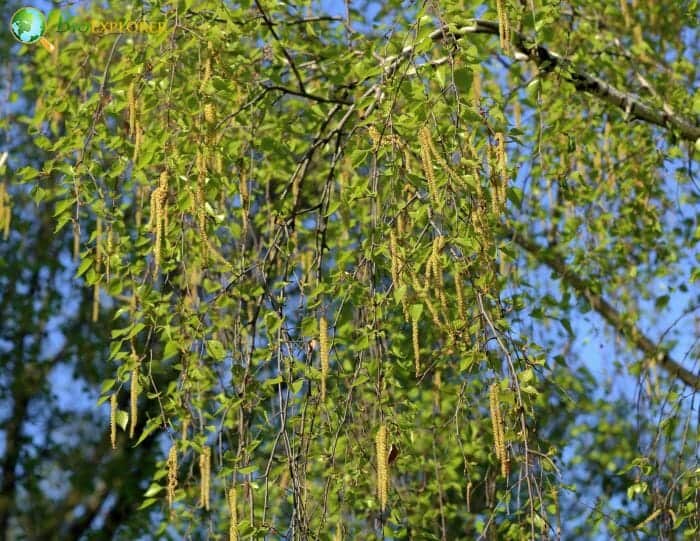
The Betulaceae grow in northern temperate and tropical, mountainous regions of the world. The family is sometimes categorized into two subfamilies: Betuloideae with male flowers arranged in groups of 3, and the Coryloideae with only 1 male flower unit.
Fagaceae (Oak family)
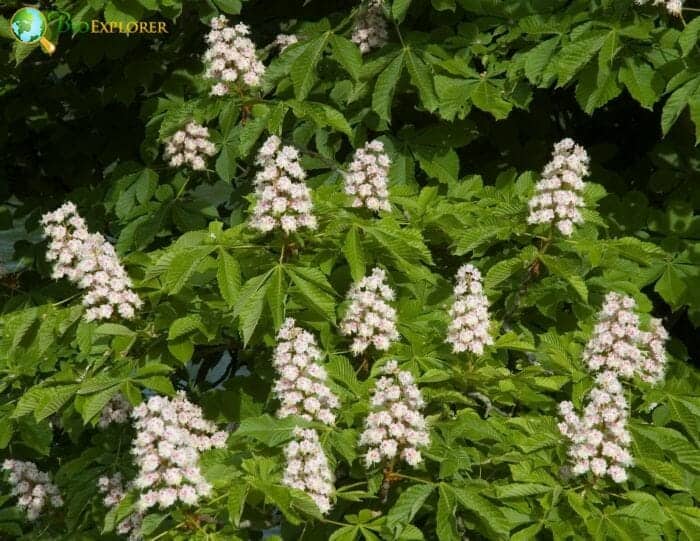
The Fagaceae comprises monoecious trees or shrubs that are rarely dioecious. The Fagaceae has a widespread distribution in nontropical regions all over the world. The family is economically important as a source of lumber trees, such as Fagus ( beech), Quercus (oak), and Castanea (chestnut). Another member, Q. suber, is used to produce commercial cork.
Juglandaceae (Walnut family)
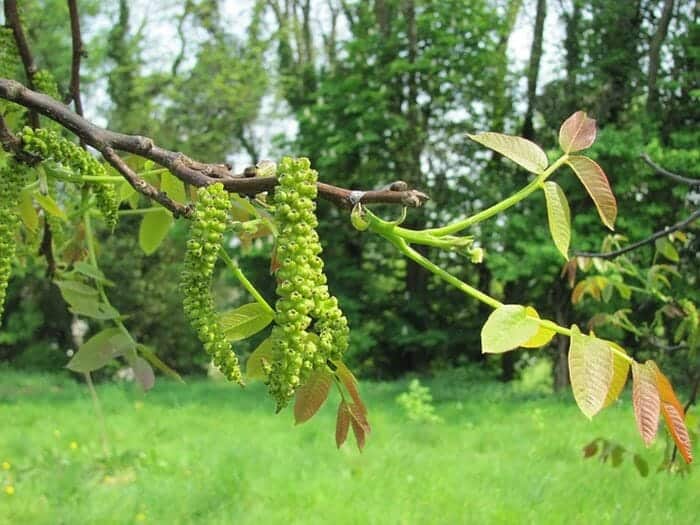
The Juglandaceae can be found in Europe, North America, South America, and Asia, especially eastern and southeastern Asia. The family holds economic importance as a source of timber, furniture, and nut trees such as pecan.
Casuarinaceae (Beefwood family)
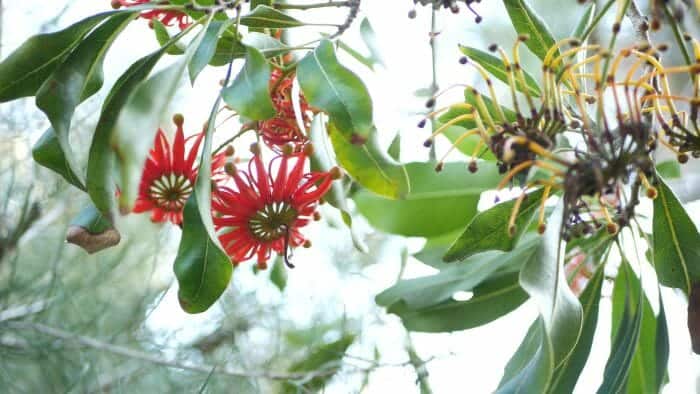
The beefwood family is distributed from Southeast Asia and Malesia to the Southwestern Pacific, especially in Australia.
Myricaceae (Wax myrtle family)
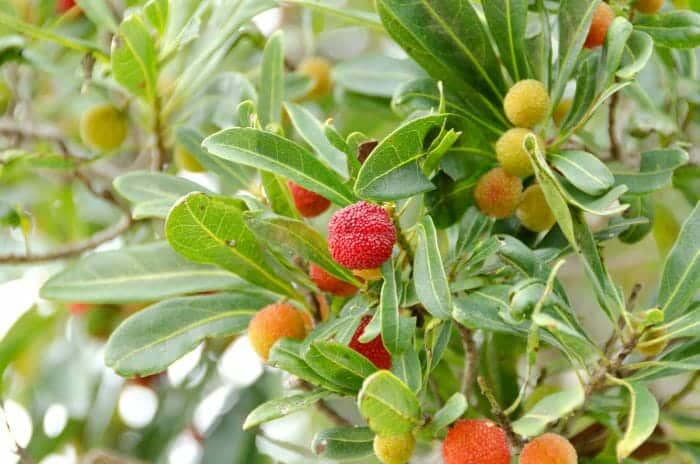
The wax myrtle family consists of dicotyledonous small trees and shrubs. The distribution is Cosmopolitan but scattered. For instance, they are neither present in the southern half of South America nor in the south and east of New Guinea.
Ticodendraceae
Ticodendraceae contains a single species, T. incognitum, that grows in the montane areas of Central America.
Nothofagaceae (Silver Beech Family)
Nothofagaceae also called the southern or silver beech family, contains 35 species of Nothofagus that are distributed across southern South America, New Zealand, New Caledonia, Australia, and the mountains of New Guinea.
Fagales Characteristics
Fagales contain trees or shrubs having the following features:
- Simple or compound leaves mostly arranged alternately (in rare cases, leaves are whorled or opposite).
- Generally, the plant has tiny flowersof opposite sexes (monoecious).
- The unisexual flowers are primarily wind-pollinated.
- The staminate, when present, is arranged mainly in hanging flower chains called catkins.
- There is either no perianth, or it is represented by one rudimentarywhorl of tepals.
- The pistillate flowers are usually subtended by a cupule (hull), which at times encloses the fruit wholly or partially.
- Usually, the distinct stamens in every flower are two to many, but there is only one in some species.
- The pistillate flowers have 2, 3, or 6 (to 12) carpels that unite to create an inferior ovary with locules equal to carpels.
- The fruit may be a nut, samara, or drupe, usually one or several held inside a hull or cupule.
- The nut-bearing trees yield fruits with three layers: an outer skin, a pulpy zone in the center, and a stony layer on the inside called an endocarp. These features are also present in a drupe, but they define a drupaceous nut or just a nut for this order.
- The seeds have a large embryo with very little to no endosperm.
Betulaceae Family Characteristics
The Betulaceae are monoecious trees or shrubs that have the following distinctive features:
- Simple and toothed leaves.
- Elongated, pendulous, male catkins and female catkins pendulous to erect, each having several bracteate dichasia.
- The fruit is a nut or a 2-winged samara.
Fagaceae Family Characteristics
The Fagaceae has the following distinctive characteristics:
- Fagaceae are monoecious trees or shrubs that are rarely dioecious.
- They have simple leaves that are divided sometimes only.
- Small, unisexual flowers.
- The male flowers are present as catkins or heads of reduced dichasia.
- The female flower is present at the base of male inflorescences. The female flower may be solitary with an inferior, multicarpellate ovary.
- The fruit is a nut that has subtended 2-many valved cupules with appendages.
Juglandaceae Family Characteristics
The Juglandaceae are monoecious or dioecious trees or shrubs that have the following features:
- Pinnate or trifoliolate leaves.
- Small flowers with no corolla.
- Male flowers are generally arranged as catkins.
- Female flowers grow at the tips of shoots.
- Ovary inferior has 2-3 carpels and locules (1 loculate above).
- The subtending bracts fuse to form an outer husk in several taxa.
- The fruit containing a single seed is a nut, samara, tryma, or pseudodrupe.
Casuarinaceae Family Characteristics
These flowering plants can be recognized easily since they resemble conifers. Some typical features include:
- Tiny leaves that are whorled.
- A carpellate inflorescence forms a small cone.
- A very distinctive feature is the bracteoles that widely gape when they reach maturity, releasing the samaras.
Myricaceae Family Characteristics
These are woody plants that can be recognized by the following features:
- The presence of aromatic glands that may cover the plant.
- Simple, spiral, estipulate leaves that are rarely deeply lobed.
- Single-seeded fruits are usually covered with waxy bumps, granules, or layers.
- Small, greenish flowers that are inconspicuous.
- Usually, there are separate male and female flowers arranged in catkins either on the same or different plants.
Ticodendraceae Family Characteristics
These are wind-pollinated trees that may be distinguished by the following features:
- Serrate leaves that have stipules around the stem.
- Carpelate flowers with two long stigmas.
Nothofagaceae Family Characteristics
Nothofagaceae[2] consist of monoecious, deciduous, or evergreen forest trees having the following features:
- Simple leaves having peltate or non-peltate stipules.
- Male dichasia are present in small clusters comprising 1-3 campanulate flowers bearing orange, yellow, or deep red stamens.
- The female dichasium is a cluster of 2-3 flowers that are 1-flowered at times. The cluster is subtended by a valvate cupule that turns woody as it matures.
Fagales Example species
- Species of Quercus (oak), Fagus (beech), and Castanea (chestnut) – important lumber trees.
- Species of Carya, Engelhardtia, and Juglans (walnut): Economically crucial as sources of timber and furniture.
- Carya illinoinensis: Trees that yield pecan nuts.
- Nothofagus: An all-purpose timber used in the manufacture of flooring, cabinetwork, and millwork.
- Corylus avellana– An Eurasian tree that produces hazelnuts (cobnuts).


























